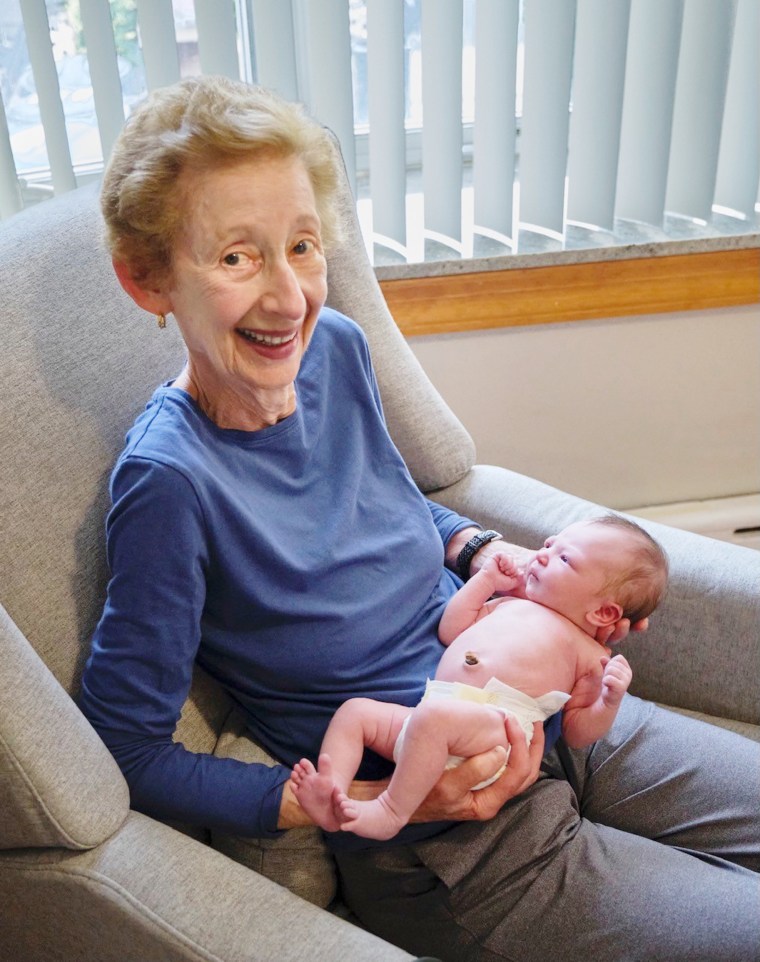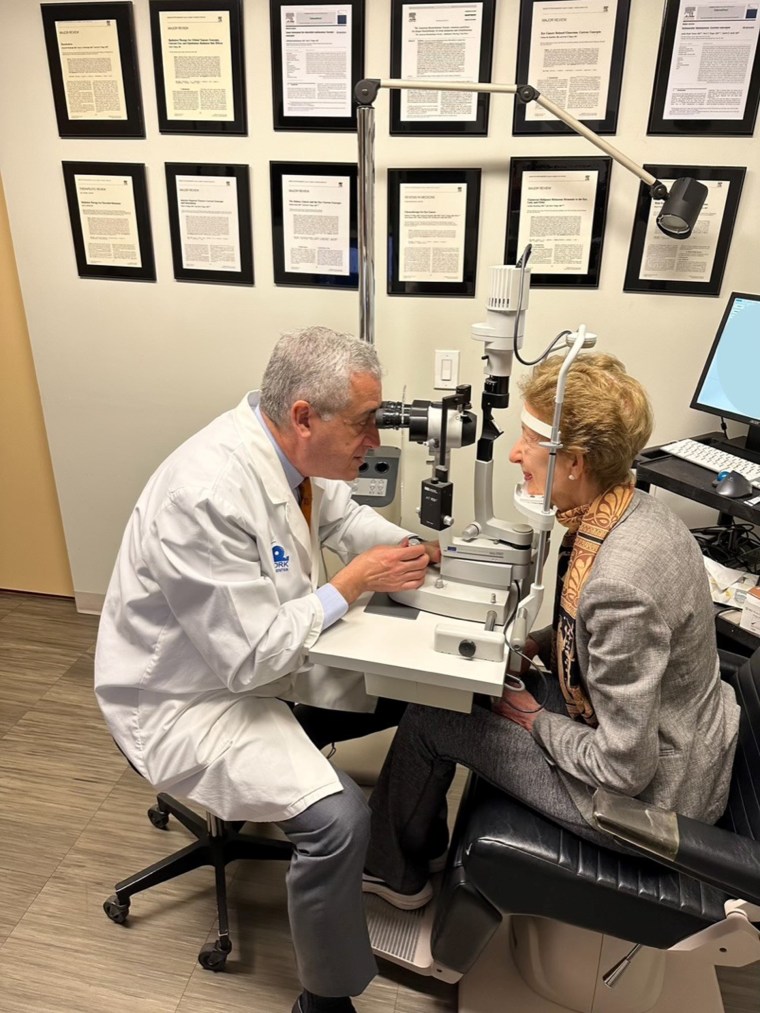During an eye exam last year, Marilyn Hillman’s ophthalmologist noticed freckles in her eyes, and the doctor recommended Hillman follow up with an ocular oncologist. That’s when she learned her right eye had ocular melanoma, a type of cancer that develops in the eye often because of sun exposure. Hillman felt a little surprised because she always protected her face from the sun.
“I was a hat and sunglasses wearer for most of my life — so go figure,” the New York City resident tells TODAY.com. “If it weren’t for that exam, I would never have known that I had melanoma.”
Regular eye exam reveals rare diagnosis
In 2022, Hillman attended a routine eye exam with a new doctor. As the doctor peered into her eyes, she noticed something.
“She called them freckles,” Hillman recalls. “She said, ‘I can’t tell whether they are anything or nothing, and that’s why you need to go to an ocular oncologist.’”
For years, Hillman had visited an eye doctor annually for exams. She wore glasses for reading and distance, “although my distance vision was pretty good,” she says. After cataract surgery, she has 20/20 vision and no longer wears glasses.

Even though she’s regularly been examined for eye health, last year was the first time anyone mentioned she had freckles.
“The only reason it was found is because my ophthalmologist retired and I went to a new person,” she says. “She did testing that he never did.”
After her doctor recommended that she visit an ocular oncologist, Hillman scheduled an appointment with Dr. Paul Finger of the New York Eye and Ear Infirmary.
Ocular melanoma
Ocular melanoma is a rare type of cancer that impacts about 2,500 people in the United States and 10,000 worldwide annually, according Finger. Freckles and moles in the eye, what doctors call nevi, occur more commonly than ocular melanoma. Nevi are often found in light colored eyes.
“You can see them better if people have blue eyes because it’s a contrast,” Finger tells TODAY.com. “It’s very common to have spots, but sometimes these spots can turn into melanomas.”
Much like skin melanoma, the sun and ultraviolet light can cause nevi to become cancerous, Finger says.
In the eye, there’s a blood vessel layer called the uvea that starts at the iris and goes into the choroid, a blood vessel that nourishes the retina. This is where the cancer can originate.
“That layer has melanocytes, pigment cells, in it, and those melanocytes can turn into melanomas like people would get on their skin but inside the eye,” Finger says.
Some people learn they have melanomas through a routine eye exam while others might notice a change in their vision. Sometimes people can see them when they look into their eyes in the mirror.
“If people do notice a change at all … they should just generally get an eye exam,” Finger says. “Most of the time, it’s caught before it gets so big (that) it causes symptoms.”
Doctors frequently treat ocular melanoma with “plaque therapy,” a treatment where they place a radioactive disc on the eye to treat the cancer, Finger says. The disc remains on the eye for about a week so the radiation can neutralize the cancer.
“The radiation goes into the eye and hits the tumor and kills it, sterilizes the tumor and keeps the cells from being able to divide or spread to other parts of the body,” Finger explains. “This disc-shaped device is removed from the eye five to seven days later.”
Finger hoped to provide the same amount of therapeutic radiation in a different way, and he developed a technique to help.
“We developed an applicator that we could merely put on the eye for an average of seven minutes and then take it off, so the amount of radiation that’s given in a week is actually given in seven minutes," he explains.
The device, which he developed with Liberty Vision, is called the iWand. Patients are in twilight sleep sedation while they undergo the procedure.
“All we need to do is push the normal tissue away from where the source is placed on the eyeball and then put the line of the applicator on,” Finger says. “Seven minutes later, that tissue is moved back into its position and the patient goes home.”
The tumor remains in the eye, but it is inactive.
“The radiation slices the DNA so when the cancer cells try to divide and make new cancer cells, they die because they can’t go through mitosis,” Finger says.
While people who experience skin melanoma are more likely to have another one, ocular melanomas don’t carry this same risk, he says. Finger says ocular melanoma can be prevented by people always wearing sunglasses and hats.
“(Your eyes) are precious so you want to protect them for a lifetime,” he says. “Sunglasses and hats are really really important because you can’t put sunblock on your eyes.”

Life after eye melanoma
Hillman has returned to working as a museum docent and has not had any lingering side effects of her ocular melanoma. Doctors have been monitoring her closely.
“Each time that I have gone for a follow-up, they have done all the testing over again and they tried to find out if the melanoma has grown at all or if it has shrunk,” she says.
It’s been stable and Finger agrees that Hillman has been doing well.
“She’s doing great,” he says. “We saw no swelling of the cornea, no inflammation on the inside of the eye even within he first few weeks.”
Hillman hopes that others will undergo regular eye exams so if changes occur in the eye, they're discovered in early stages.
“My tumor is quite small, found early, thank goodness,” she says.